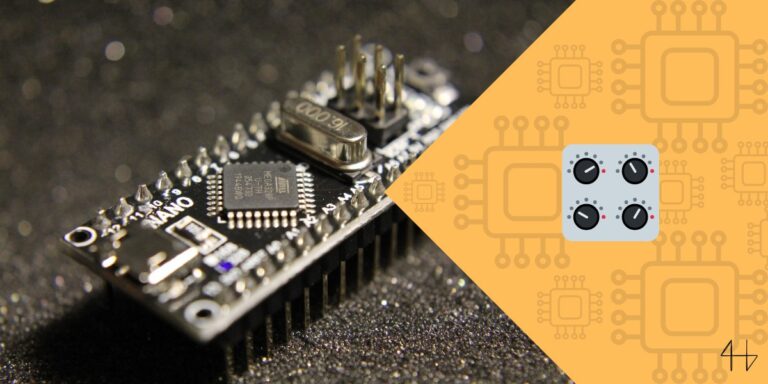Struggling with electrical design? Believe me, you’re not alone. Loads of inexperienced electrical engineers and electrical engineering students find the whole process overwhelming.
I have also been there.
But don’t worry! I’ll break down the 10-step electrical design process for you – right here, right now.
What is the Electrical Design Process?
It’s a structured approach that makes sure that your project is safe, efficient, and compliant with regulations. It’ll help make sure you don’t forget anything important.
Reasons to use the Electrical Design Process
- Improved Accuracy
- Higher efficiency
- Safety
- Know what to do next
- Minimise errors
- Improve overall project quality
The 10 Electrical Design Steps
Ready to streamline your electrical design projects? Here are the 10 essential steps every electrical engineer should follow. These steps will simplify your process and ensure top-notch results.

1 Problem definition
Defining the problem is the first step in any electrical design project.
This involves understanding the system’s requirements, development goals, and planning constraints. Clear problem definition ensures a focused and efficient design process.
A problem well-defined is already half solved.
2 Architecture
The architecture is a rough overview of your system divided into subsystems.
Draw up a block diagram of your electrical system. This will just make sure you have a clear understanding of how your subsystems should interact with each other.
Some points you want to focus on here are:
- Functionality
- Safety
- Connectivity
- Power supply
3 Schematic Capture
It involves creating detailed wiring diagrams that map out every component and connection. This step ensures accuracy and simplifies troubleshooting.
Extra tip: there are almost guaranteed schematics for every single sub-circuit that you’ll need. Just find one and draw it into your schematic.
4 Component Selection
Selecting the right electrical components is crucial for a reliable and efficient electrical system. Carefully choosing electrical equipment ensures your design meets all performance and safety standards.
You need to know your requirements and constraints for your project for this step. Just keep it open next to you while you go over the datasheets. Also, make sure that the components you choose don’t limit other components.
5 PCB Layout
Creating an efficient printed circuit board (PCB) layout is vital in transforming electrical schematics into functional printed circuit boards (PCBs).
Properly placing electronic components ensures optimal performance and minimizes potential issues in your design.
I recommend using software like Ciruitmaker by Altium to design your PCBs. (It’s free)
Keep these points in mind when designing your PCB:
- Keep it small and tight
- Make sure that the pads are big enough to solder
- For THT, make the pads 2x the pinhole
- Ground Separation
- EMI (Electromagnetic Interference) mitigation
- PDN (Power Delivery Network) Stability
- Thermal Management
- Manufacturability
6 Design Rule Check
The Design Rule Check verifies the accuracy of your electrical design. Make sure your power systems, panel layout, power distribution, etc. follow the specifications and safety standards.
7 Simulation and Verification
Simulation and verification play pivotal roles in the electrical design process, especially when dealing with complex distribution systems.
Using specialized software like LTSpice, designers can simulate various scenarios to ensure the reliability and efficiency of their designs.
This step helps identify potential issues before implementation, saving time and resources in the long run.
Once this step is finished, send the PCB layout to get printed out for you. I recommend using JLCPCB.

8 Build the PCB
Time for the fun part: populating the board and soldering. Who doesn’t like melting stuff with a hot stick?
When building the PCB, pay attention to your specifications and manufacturing requirements. Also, don’t burn yourself!
9 Prototype and Testing
Now it’s time to test your prototype.
Make sure that the systems function as expected and meet the needs of whatever it’ll be used for.
Additionally, testing allows you to fine-tune the distribution system for optimal performance and reliability.

10 Design Iteration
This step is here to double and triple check everything. Go through a checklist of your specifications & standard compliance to make sure you haven’t missed anything.
Just like an artist makes their painting better with every layer of paint, you will make your circuit design better with every iteration and review.
11 Documentation & Release
Documentation and release are crucial steps in the electrical design process.
Thorough documentation ensures that all aspects of the design are captured accurately, facilitating future maintenance and troubleshooting.
Proper release procedures ensure that the electrical systems are implemented correctly, meeting the specifications outlined in the engineering plans.
Key Considerations For Successfully Designing a PCB
When designing a PCB (Printed Circuit Board), several key considerations can significantly impact the success of your project.
From component placement to signal integrity, understanding these factors is crucial for creating efficient and reliable electrical systems.
How to Ensure High-Quality Electrical Systems
Ensuring high-quality electrical systems is paramount for electrical engineers, especially when it comes to lighting equipment.
By following industry standards, conducting thorough testing, and implementing proper maintenance protocols, engineers can guarantee the reliability and safety of electrical systems.
Conclusion
Mastering the electrical design process is essential for engineers striving to create safe, efficient, and reliable electrical systems.
By following the structured approach outlined in this guide, incorporating tools like AutoCAD Electrical, and considering key factors such as documentation, PCB design considerations, and quality assurance measures, engineers can navigate their projects with confidence.
Embracing these principles will not only streamline workflow but also elevate the quality and performance of electrical systems, ensuring success in every project.
There is no teacher like experience. Now go and learn by applying this knowledge to your own engineering project!
FAQs

How do I start electrical design?
To begin electrical design, aspiring engineers should first familiarize themselves with industry standards and gain proficiency in relevant tools like AutoCAD Electrical.
Additionally, understanding the principles of circuitry and lighting equipment is crucial for laying a strong foundation in electrical design.
How to design electrical circuits?
To design electrical circuits effectively, electrical engineers must consider factors such as load requirements, circuit protection, and component selection, especially when incorporating lighting equipment.
This involves thorough planning, schematic design, and testing to ensure safety and functionality.
What is an electrical design engineer?
An electrical design engineer is a professional responsible for creating and implementing electrical systems, including circuits, wiring, and components, to meet specific project requirements.






